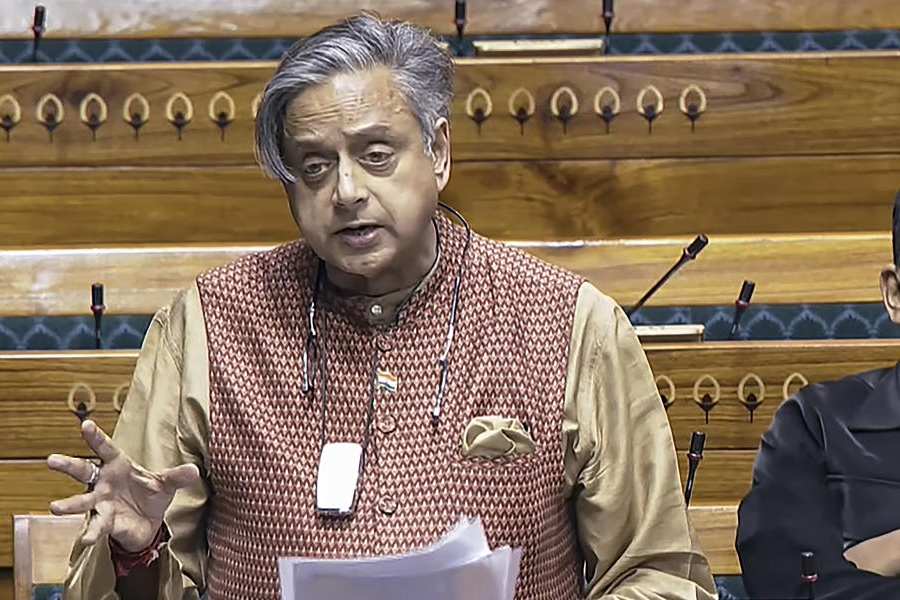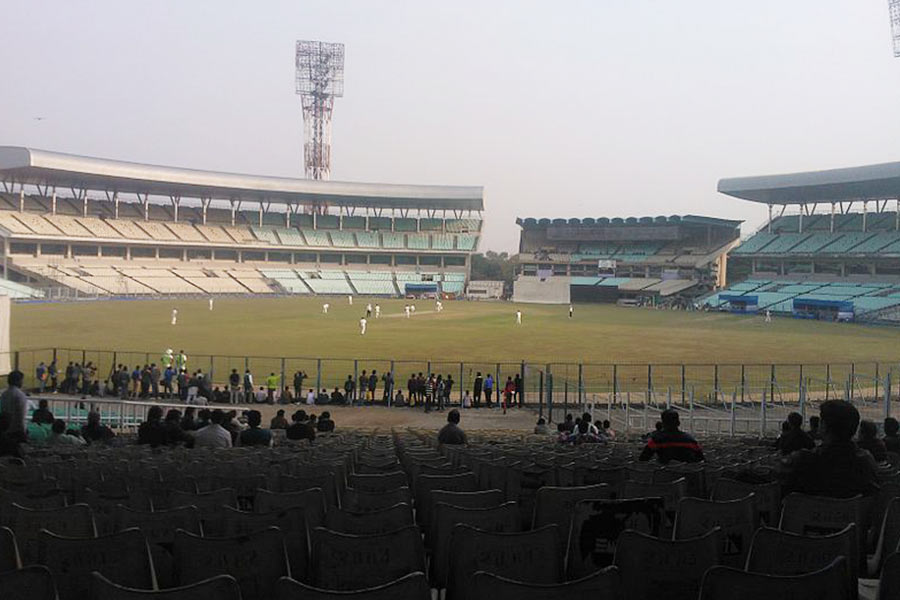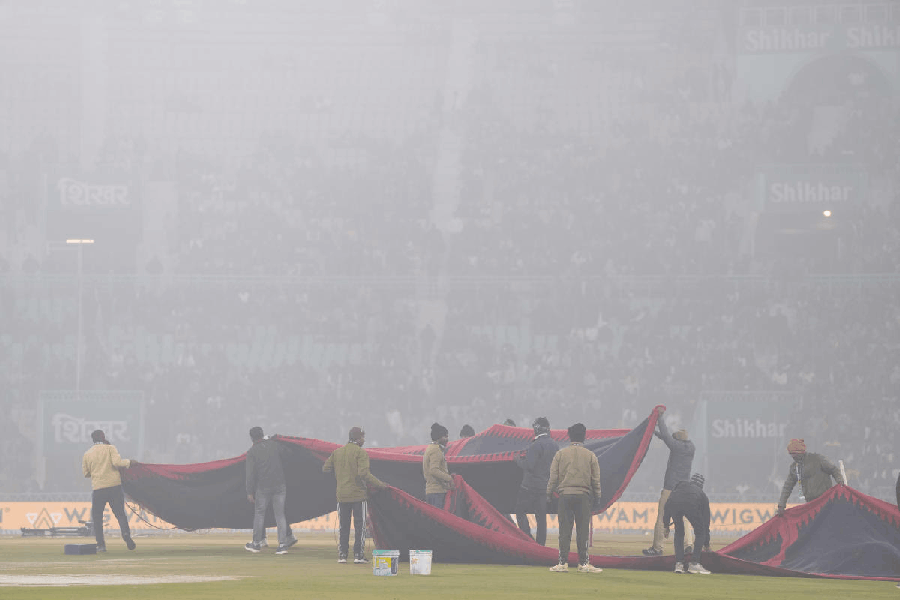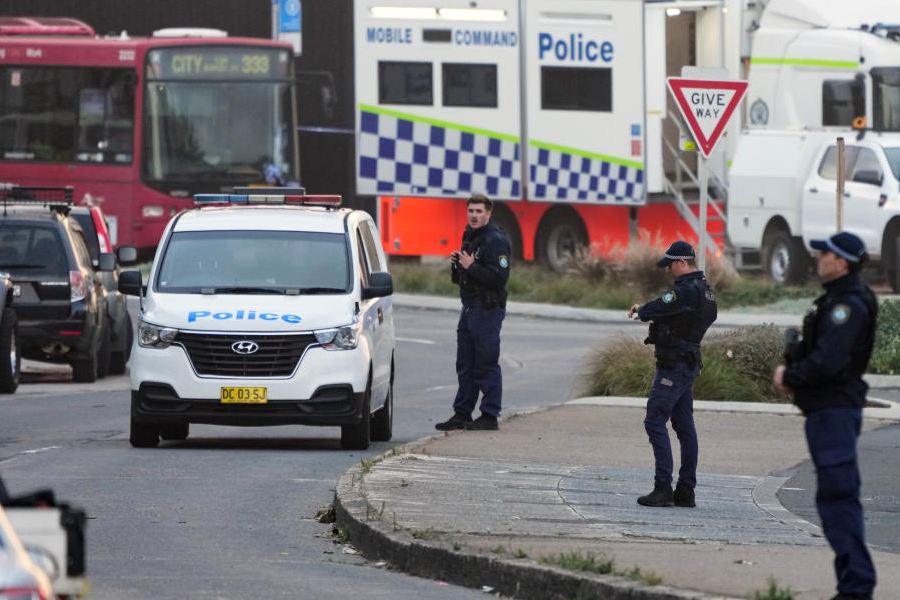Steven Soderbergh, after shooting his 2018 film Unsane with an iPhone, announced smartphone cinema to be the future. There are many ways to gauge the influence of the iPhone, which has changed human behaviour like few gadgets have. A good place to start is by exploring how it has squeezed into the film industry, impressing even Martin Scorsese, who said a couple of years ago: “The image on an iPhone. That’s the new cinema-verite.” The flexibility allowed by iPhones is also clearly visible in the brilliant four new short films at the heart of 2025 MAMI Select: Filmed on iPhone programme.
Filmmakers Amrita Bagchi, Rohin Raveendran Nair, Chanakya Vyas and Shalini Vijayakumar warmed up to the tech story arc while percolating various ideas for their films. Each of them harnessed the power of a bunch of iPhone 16 Pro Max to shoot their impressive films on which they were mentored by Vikramaditya Motwane, Lijo Jose Pellissery, Vetri Maaran and Konkona Sen Sharma.
Take the case of Nair’s short film Kovarty that takes viewers to Kerala’s breathtaking Alleppey backwaters where a love story unspools — between a typewriter that was christened Qwerty and a young woman named Daisy. The romance of the ribbon fills up the screen. Qwerty cannot speak, but for Daisy, it can type out its feelings. There is something bewitchingly authentic about each page that Qwerty rolls out, especially when viewers see life through the perspective of the typewriter.
The green hues of the backwaters and expansive blue skies are captured as effectively on iPhone as the black-and-white perspective of Qwerty. The form factor of the phone allowed Nair to place an iPhone 16 Pro Max inside the typewriter, allowing him to capture a unique POV.
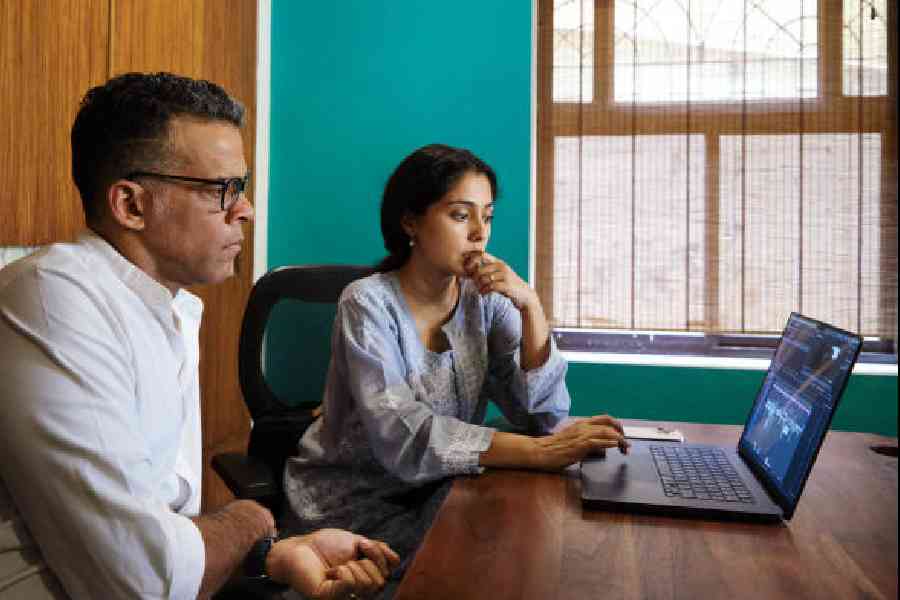
Amrita Bagchi reviews an early cut of Tinctoria on her M4 Max Macbook Pro with mentor Vikramaditya Motwane. “It’s like a rocket machine,” she says
“When Lijo sir came on board as mentor, it was like the icing on the cake. He gave us a lot of interesting feedback. Initially, the typewriter had a human voice. He suggested that I could explore a way in which the typewriter doesn’t have a human voice. I think that was the best advice,” Nair told t2oS.
Respected filmmaker Lijo Jose Pellissery, who has a number of well-known films to his name, like Angamaly Diaries, Jallikattu and Nanpakal Nerathu Mayakkam, is himself surprised by what iPhone can offer. After the screening of the four films in Mumbai, the 46-year-old filmmaker told us how one can approach things differently while shooting a film using smartphones. “How small the equipment can be and how handy,” he remarked. “When technology becomes so convenient, filmmakers can focus more on ideas. The idea for the film (Kovarty) is so interesting; we didn’t have to worry about the technology. A lot of things can be done with iPhones, even the sound. As technology progresses, creators naturally would focus more on their ideas. It’s making things easier for the new breed of filmmakers.”
Accessibility makes iPhones special
Till the 1990s it was one big camera party with sales growing modestly but steadily. Then digital cameras were introduced. Its demand soared. What the world needed was a watershed moment. Apple stepped in to launch the first-generation iPhone in 2007. Since then, every year has brought a bunch of new hardware features without compromising the fluidity of the software. Helping the cause have been developers, who are constantly offering new solutions.
“We’ve continually added many features over the years, focusing on how we can enable everyday users to take great photos, capture memories and videos. We also focus on creating this amazing set of tools for professional content creators. Since the introduction of iPhone, it’s always been the most personal device, one that has become the world’s most popular camera, which you have on you all the time,” Kaiann Drance, Apple’s vice-president of worldwide iPhone product marketing, told us.
Look at what is possible now. If you have iPhone 16 Pro or iPhone 15 Pro you could shoot in Log, which is a colour profile that looks very low-contrast out of camera, but gives much more flexibility for adjusting the contrast, colours and overall look of the footage in post-production. Applying the edits is a process called colour grading and it separates professional movies from everyday home videos. You can do it on iPhone.
Or take the case of Action mode, which corrects significant shakes, vibrations, and unintended motion when capturing video. How can we forget Cinematic mode? It creates clips with a simulated depth-of-field effect that keeps your subjects — people, pets, and more — in sharp focus while applying a pleasing blur to the background (or foreground).
“It’s remarkable to see that accessibility translates into a wide range of iPhone films, ones that typically would have required professional-grade equipment, which is costly,” said Drance.
“Accessibility is something that I think makes iPhone really special in how it has been able to inspire this type of storytelling. We continue to add capabilities that create incredible quality video. We are known for having things as basic as incredible stabilisation, but we’ve taken that to the next level with features like Action Mode, which has been used in some of the films showcased at MAMI Select (Filmed on iPhone), like Mangya, with the rooster scenes. Then there are other capabilities like Cinematic mode and the new feature called Audio Mix (for iPhone 16 Pro).”
Mangya is a brilliant work of art with Chanakya Vyas in the director’s chair and mentoring him is Konkona Sen Sharma. He found inspiration for his story in newspaper articles. Vyas — whose short film Loo was nominated for Best Short Film (Narrative) at the New York Indian Film Festival — read an article about an avian flu outbreak in suburban Mumbai. Losing his golden retriever was at the back of his mind. What resulted is a film about a boy who loves a rooster named Mangya. Can he save the bird despite the culling that was happening?
For an important scene, he tracked his actor for 300m just before the break of dawn. “There’s no time to mount the camera on a traditional gimbal,” he said. “But with Action mode, I could even shoot multiple takes. The stabilisation is just so impressive.”
Not only that, he used the studio-quality mics on iPhone 16 Pro Max to capture footsteps, the rooster crowing and the whirring sound of a fan with clarity. One of the highlights of the latest iPhone 16 Pro is the Audio Mix feature, which can deliver studio-quality sound. “Audio Mix is a ground-breaking feature and it’s something that makes use of our integrated hardware and software, as well as our silicon and our intelligent algorithms. You can adjust the sound even after you capture a video, so you can focus on the person in frame, and you can get that professional-grade and studio-quality sound. People have been blown away by the feature. Even when we are taking casual videos with the front or the rear camera of family members doing different things, you can see how different the audio tracks can be used to augment your ability to capture a moment or to tell the right story,” said Drance.
She too spoke about the scene in which the boy chased his pet rooster. “Maybe it’s something that would have otherwise required multiple pieces of equipment, multiple takes. Now filmmakers can stay in the moment and capture a story better,” she said.
'So many ways to stitch a film together'
Getting colours right is something iPhones do effortlessly. Consider the short film by Shalini Vijayakumar. Growing up in a traditional Tamil-speaking home in Chennai, she spent her childhood listening to stories about her mother’s large family. Her influences come together in her short film, Seeing Red, a comedic horror film about the quashed emotions of the women in a large Tamil household. The interiors of the house are colourful and there is a strong element of red involved in the storyline.She had as mentor Vetri Maaran, who has several National Film Awards to his name. Vijayakumar used all of the camera features on iPhone 16 Pro Max. For tightly framed shots, the 120mm lens helped bring together her narrative, staging, and theme in a single shot that she composed using Procreate on iPad.“Using the 5x Telephoto lens, I’m able to place the men in front as they discuss the fate of the women in the background,” she said.
Drance is impressed with the way the different ways iPhones are being used. “It’s wonderful to see iPhone enable people to shoot in the way that inspires them the most. With things like the vertical format, you can see the Camera Control at work. It’s something that allows quick access to photography and video capabilities in any orientation. It’s another way to help people, ensuring they don’t miss a moment. Then there is 2x lens, Cinematic mode, slow motion, Action mode… there are so many ways to stitch a film together with the different capabilities of the iPhone to create the right storytelling,” she said.
For a veteran filmmaker like Pellissery, adapting to a new technology is important. “It’s possible to now make films on small budgets. That in itself is a great achievement. Even when films shot on iPhones are projected, the results are great. You just need to have a great idea. And then use the technology that’s around you,” he told us.
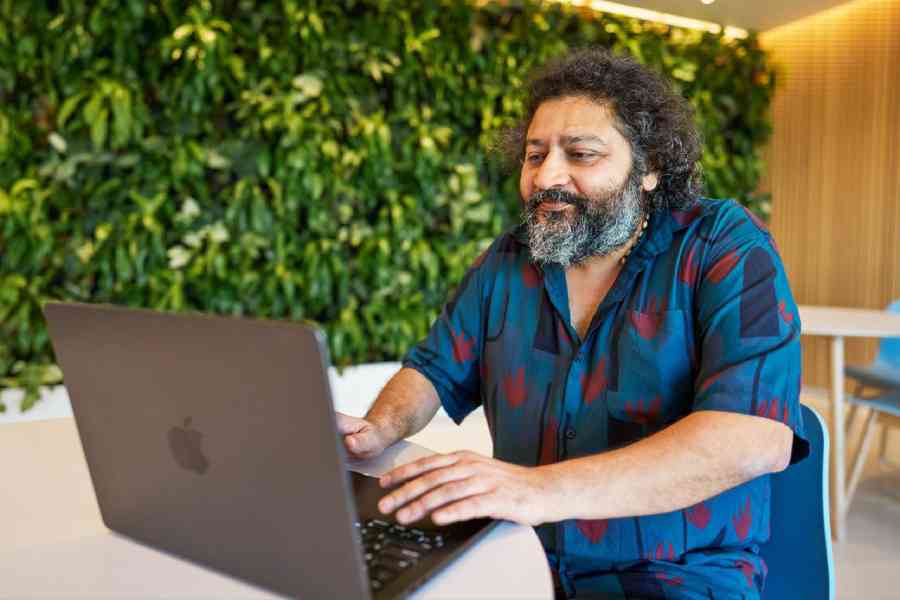
Mentor Lijo Jose Pellissery reviews footage of Kovarty on Macbook Pro with M4 Max
Speaking of technology, another MAMI Select: Filmed on iPhone title worth every minute of your time is Tinctoria, directed by Amrita Bagchi, whose other short film, Succulent, won the Grand Jury Prize at the Indian Film Festival of Los Angeles.
Tinctoria is a psychological thriller that tells the story of a modern-day fashion mogul whose ancestral legacy is built on the skeletons of indigo farmers from the colonial era. The ghosts literally come back to haunt her during an important day in her life. She has deftly created an immersive, claustrophobic atmosphere of a thriller and has made engaging use of the Cinematic mode for the film’s opening montage that involves tracking bubbles and plastic sheets flying through the air.
It’s a film that has as mentor Lootera and Udaan director Vikramaditya Motwane. The graphically demanding workflows involved overlaying the industry-standard Rec. 709 colour space on ProRes Log footage captured on iPhone. And helping her achieve it is the M4 Max MacBook Pro. “ProRes Log has been very popular since iPhone 15 Pro appeared, and support for ACES, the Academy Colour Encoding System, has been a big step forward, allowing filmmakers more control over colour grading and offering compression that is effective, and, at the same time, still maintains great dynamic range and capability,” said Drance.
The film Kovarty took advantage of the format. Drance added: “The weather was variable when the film was being shot. One day it was bright and sunny, the next day it was cloudy and gloomy. ProRes Log enabled the team to capture rich details, helping to tell the story effectively.”
'Express in creative ways'
Each of the four filmmakers also leveraged the powerful capabilities of MacBook Pro with the M4 Max chip to make their stories come to life. “Shooting and editing within the Apple family of products gives you a stellar advantage: speed,” said Motwane.Young filmmakers have at their disposal a number of powerful applications to edit videos. “Whether it’s Apple applications, like Final Cut Pro or Final Cut for iPad, these are unique, including multicam recording. Or use third-party applications from a wonderful ecosystem of developers, like Blackmagic Camera. Filmmakers can edit on the Mac with its powerful chipset. Some filmmakers have talked about how unbelievable it is to shoot in 4K@120 fps… to go on to the Mac and edit the shots, without the machine slowing down. It can handle powerful workloads without skipping a beat,” said Drance.Pellissery also likes the flow between iPhone and Mac. “It’s become much easier. It makes making films less expensive, there are fewer people around,” he said.
Ultimately, it is inspiring to see how iPhones are used today and how that has evolved over the years. “People can express themselves in creative ways. If you look at the progression, iPhone has continued to add even more powerful capabilities for photography, for video, for professional filmmaking, and it’s inspiring because these tools that are great for professional filmmakers are also available to everyday people. People have the exact same tools in many ways that professionals do. It can inspire them to be more creative and to look at how they can capture their stories in a way that’s more meaningful, using the power of iPhone,” said Drance.
The leaps and bounds in technology have made iPhone a unique piece of kit for filmmakers at all budget levels. Suddenly, the home video maker has access to the same tools as a Hollywood director. All you have to do is get the story right and let iPhone do its magic.
Tips and tricks
** Set up your iPhone: If you have an iPhone 16 Pro or iPhone 15 Pro, consider shooting in Apple’s ProRes Log format. This gives you the best image quality. You can colour grade your video to give it the feel of a Bollywood film.** Stabilise shots: There’s nothing that can ruin a video quite as easily as shaky hand-held footage. Use Action mode.** Be creative with angles: If you’re capturing the moment your child kicks a football, consider how you can capture that moment in a more exciting way. For example, shoot 4K@120fps.** Recording audio: Audio Mix, which uses the various microphones throughout iPhone 16, delivers studio-quality audio when you record videos. It can isolate certain audio sources in the video, so that you could get the sound you’re looking for.** Edit your video: You can edit simple videos on the phone or use apps like BlackMagic’s DaVinci Resolve or Adobe Premiere Pro.
5 shot-on-iPhone films to watch
Fursat: The Vishal Bhardwaj film follows an archaeologist, who discovers an ancient artefact that transports him to the future. He meets his childhood friend and doctor and the chief gangster.
Tangerine: Shot entirely with three iPhone 5s cameras using the FiLMIC Pro App, the comedy-crime drama from Sean Baker follows a transgender sex worker.
Unsane: The Steven Soderbergh film sees a young woman involuntarily committed to a mental institution where she is confronted by her greatest fear.
Searching for Sugar Man: Partly shot on iPhone, it’s the brilliant story of Sixto Rodriguez, directed by Malik Bendjelloul.
9 Rides: The story of an Uber driver, who clocks in to work on the busiest night of the year, New Year’s Eve.


